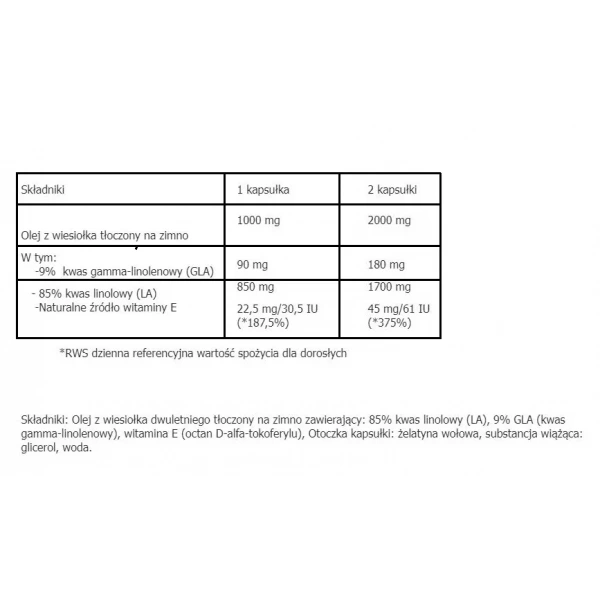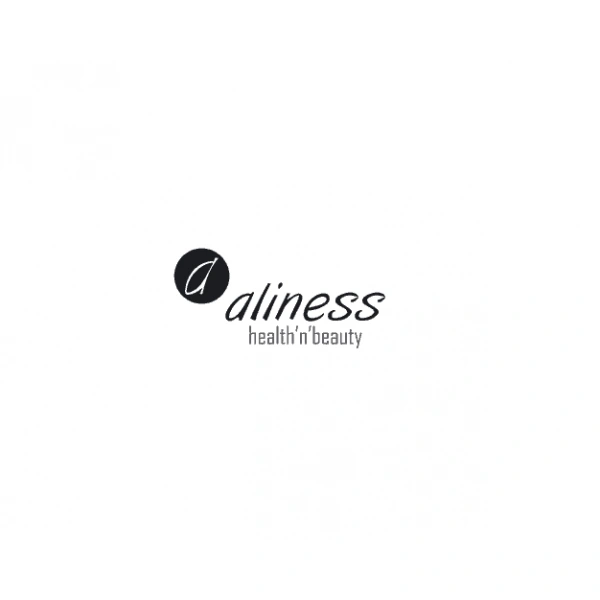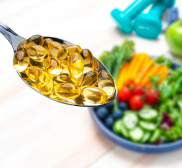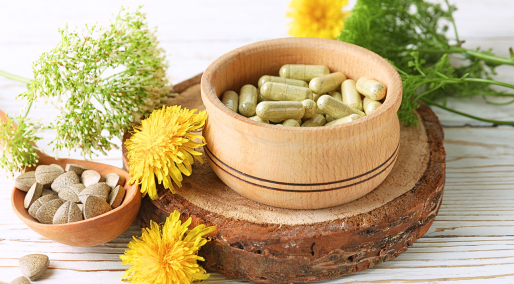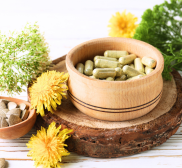- For the home
Health
- Bones and Joints
- Digestion and Healthy GI
- Essential Oils
- Fish Oil / Omega-3
- Healthy Sleep
- Heart and Cardiovascular System
- Immunity
- Liver
- MCT Oil
- Men
- Mind and Focus
- Minerals
- Pet Supplements
- Pro-Health Supplements
- Probiotics
- Senior
- Superfoods
- Urinary Tract
- Vitamins
- Vitamins for hair
- Vitamins for nails
- Vitamins for the skin
- Weight Management
- Woman
Healthy Diet
Herbs
Mother and Baby
Sport
Your Goal
Pet Supplements
Cosmetics
- Cosmetics for children
- Men's Cosmetics
- Unisex Cosmetics
- Women's Cosmetics
- Dezodoranty i perfumy
- Higiena jamy ustnej
- Kosmetyki akcesoria
- Kosmetyki dla dzieci2
- Kosmetyki do ciała
- Kosmetyki do higieny intymnej
- Kosmetyki do opalania
- Kosmetyki do pielęgnacji ust
- Kosmetyki do twarzy
- Kosmetyki do włosów
- Papier toaletowy / chusteczki
ALINESS Borage seed oil 1000mg 60 soft capsules
Available: 0 pcs.
9,75 €
Price per portion: 0,33 €
Temporarily unavailable
After purchase you will receive 40 pts
Product Details
- Description
- Dosage
- Ingredients Table
- About the brand
- Nutritional information
- Reviews (0)
- Articles
- Borage has a soothing effect on the respiratory system and facilitates breathing, relieves inflammatory pain and contributes to the flexibility and mobility of joints, improves the excretion of water through the kidneys
- Linoleic acid (LA) helps to maintain the proper level of cholesterol in the blood
- Vitamin E helps protect cells against oxidative stress
Each capsule provides 200 mg of GLA, 350 mg of LA and 10 mg of natural vitamin E.
Borage (Borago officinalis) is an annual plant belonging to the rough-leaved (borage) family. It occurs mainly in the Mediterranean zone, but also in Poland, where it can be found both as a wild weed and a cultivated plant. It owes its name to the fact that its leaves have the smell and aftertaste of cucumber, and another feature that makes it easy to spot among other plants growing on the meadow is the eye-catching blue flowers that resemble a bit of stars.
However, it is not the flowers that make it an object of interest for nutritionists and many people who want to take care of their health for years. Borage seeds are considered to be one of the richest sources of beneficial gamma-linolenic acid (GLA).
Gamma-linolenic acid is an essential, unsaturated fatty acid (EFA) belonging to the omega-6 group.
GLA is essential because, unlike saturated fatty acids, our body cannot produce sufficient amounts of it on its own, and is needed at many levels of its function. Therefore, it must be supplied with food.
GLA is also unsaturated, which means that in the molecule of this acid there are double bonds between the carbon atoms in the carbon chain. The '6' suffix means that the last such double bond is at the third carbon atom from the end of the chain.
OMEGA-3 or OMEGA-6?
Providing both omega-3 and omega-6 fatty acids is very important for the proper functioning of the body. It is important, however, to maintain their proper ratio in the diet. The optimal ratio of omega-3 to omega-6 is 1: 4.
In the diets of Western societies (European or American), this balance is significantly shifted towards excessive consumption of omega-6 fatty acids. This is because the main part of the food consists of animal products, which are predominantly saturated fatty acids, as well as omega-6 fatty acids. On the other hand, little is eaten with fish, seafood and plant products (oils), which are the natural wealth of omega-3 fatty acids.
The consequence of this style of eating is the disturbance of the proportion of omega-3 to omega-6, which is 1:15 or even 1:20. The effect of maintaining such a state for a longer time is the appearance of pro-inflammatory compounds in our body, resulting from an excessive amount of omega-6 acids.
So the trick is not to eliminate both fatty acids from the diet, but to eat in a balanced way, providing both omega-3 and omega-6 fatty acids in a proportion as close to optimal as possible.
Dosage
Serving Size: 2 Capsules
Servings per Container: 30
Form: Soft Capsule
Other ingredients
Aliness - Elevate Your Wellness
Aliness, a Polish company, stands at the forefront of prioritizing top-notch quality, trust, and security. With an unwavering commitment to excellence, their products adhere to the "clean label" philosophy. This signifies the absence of superfluous components, ensuring utmost transparency.
Their capsules are devoid of plasticizers, detrimental additives, or allergens, making them an ideal choice for individuals with gluten or lactose intolerance. Aliness places great emphasis on using ingredients that are free from genetically modified organisms (NON-GMO), fostering a natural approach to supplementation.
Cannot be used as a substitute of a healthy and balanced diet.
Consult your physician if you are pregnant or nursing.
Do not exceed recommended dosage per day.
Keep out of reach of children.
Best before: date on the package
All descriptions are the property of the www.mass-zone.eu. Copying or distribution is strictly prohibited! As per the Copyright Act from February 4th, 1994.
Manufacturer: Aliness Poland
No one has written a review for this product yet. Be the first to write a review.

